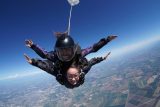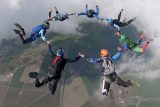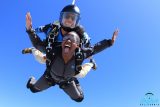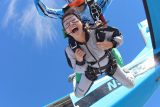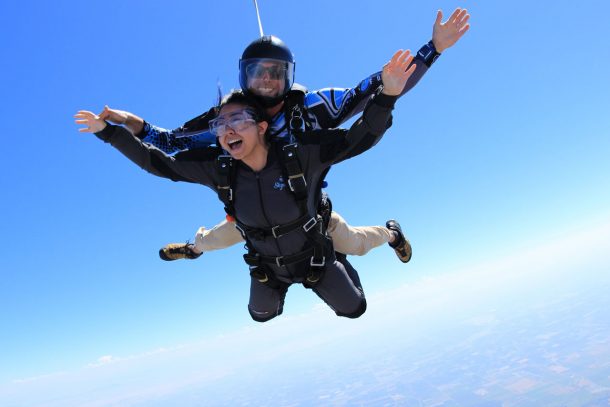There’s nothing like a good behind-the-scenes story to captivate you on how movies are made, the reality shows of famous people, or even how athletes prepare for the Olympics! Skydiving is such a unique sport that going behind the scenes is like uncovering mysteries. Here, we reveal the technology behind skydiving that’s helped advance this sport.
Altimeter
An altimeter is similar to a watch, most notably worn on the left wrist in skydiving, and is a device that measures and reads the altitude. Altimeters have gone from analog to high-tech digital altimeters that log your jumps, note your exit altitude, display colors, freefall speeds, and more. Audible altimeters are also an advancement of skydiving technology. An audible is worn in an interior helmet pocket near the ear and can be set to signal at specific altitudes, allowing the skydiver another means of being vigilant of their altitude awareness.
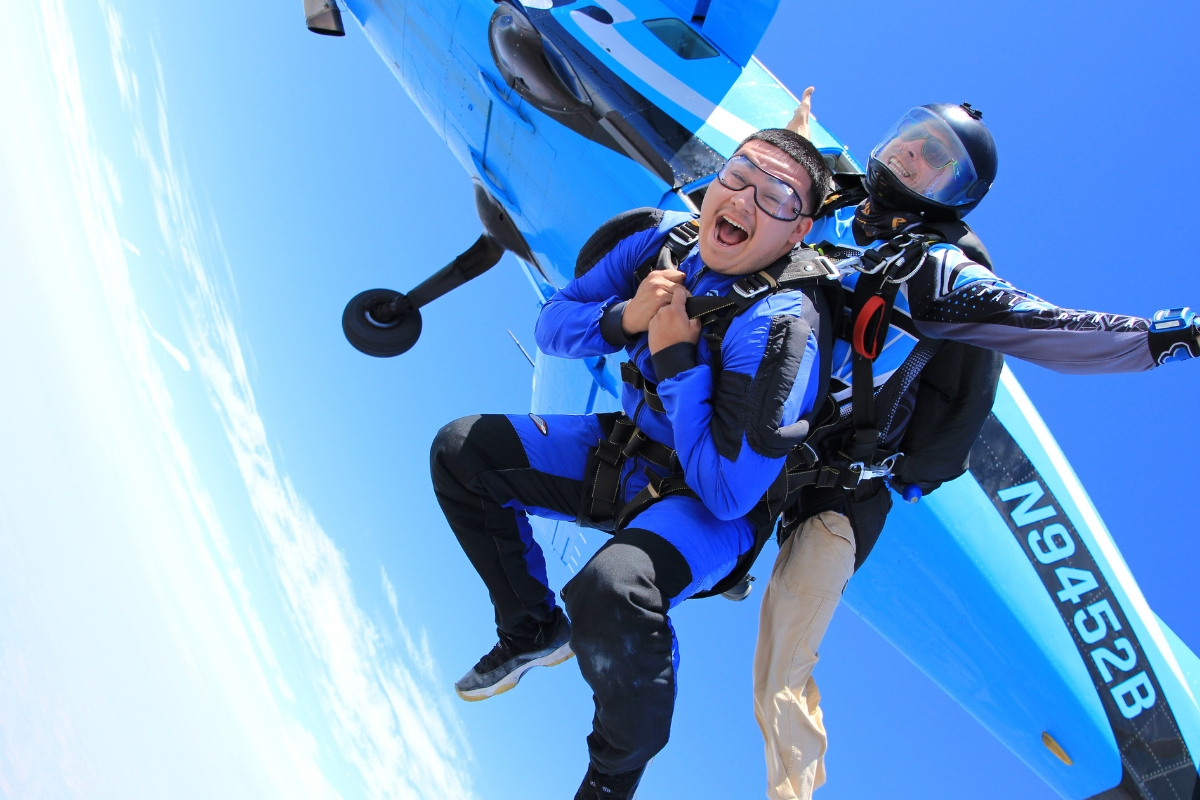
AAD
The Automatic Activation Device (AAD) is probably one of the biggest contributions to the safety of skydiving. It is a small computer that is packed within the parachute container designed to read a skydiver’s freefall speeds. If it reaches a certain parameter, it fires to cut the reserve container closing loop to deploy the reserve parachute.
Fly Sight
The Fly Sight is a type of GPS as it provides real-time glide ratio, horizontal, or vertical speeds. It is commonly used in the canopy piloting and wingsuit communities of skydiving to help improve one’s skills in real-time and see data of your improvements.
Helmets & Jumpsuits
It may not seem so revolutionary, but simple skydiving gear such as helmets and jumpsuits have seen their own evolution in the sport. When skydiving was just becoming popularized in the late 60s and 70s, skydivers didn’t always wear head protection and used military surplus-type jumpsuits.
Through the evolution of the sport and its multitude of different disciplines, the need for more robust headgear and jumpsuit design was needed, and the manufacturers stepped up. For helmets, it went from none, to frappe hats (a soft shell head covering), to open face hard-shelled helmets, to full-faced hard shell helmets. For jumpsuits, it went from baggy canvas-type suits to tight-fitting, to form-fitting.
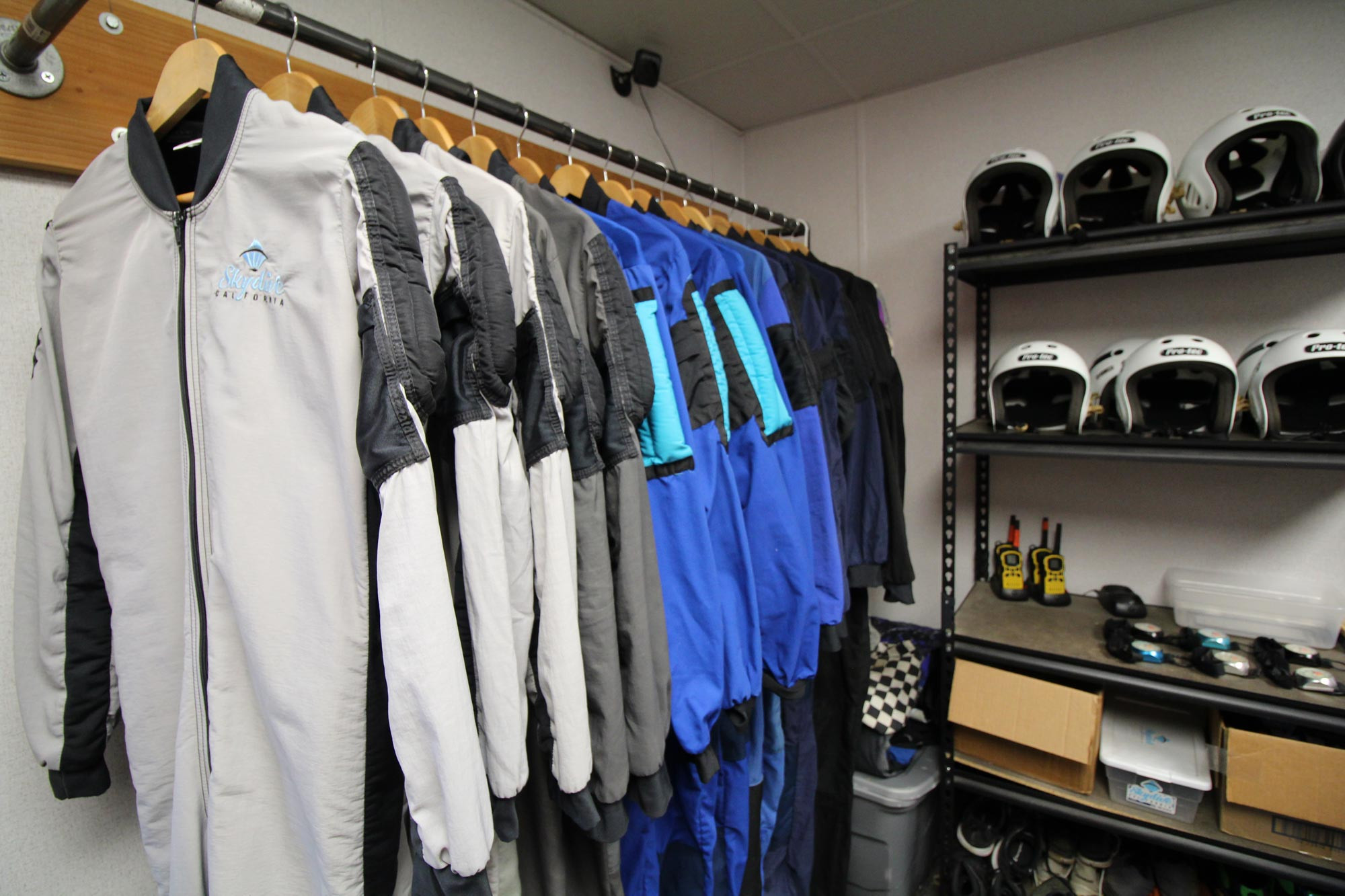
Parachute Design
Nowadays with social media taking the internet by storm and a few popularized movies such as Mission Impossible and Point Break, many realize that skydiving isn’t just the old military round parachutes as it started out to be. However, there’s much more behind just going from round parachutes to square.
Parachute manufacturers started developing new parachute technology to meet the needs of several types of skydivers. Instead of a ‘one-parachute-fits-all,’ parachutes are now designed for novice skydivers just learning up to high-performance wings for the seasoned and highly trained canopy pilots of skydiving.
RSL / MARD
RSL stands for Reserve Static Line and MARD means Main Assisted Reserve Deployment. Both have similar functions using the static line principles. The purpose of both is to help jettison the reserve parachute after releasing a malfunctioning main canopy.
Are You Ready to Discover Skydiving Tech?
The technology behind skydiving continues to evolve as other technology advances and skydiving needs become apparent. All of this tech is to serve the safety of the sport and when you enter this arena, you’ll even discover other tech such as apps, training methods, and more that skydiving utilizes.
Are you ready to discover skydiving technology first hand? Click HERE to book!
